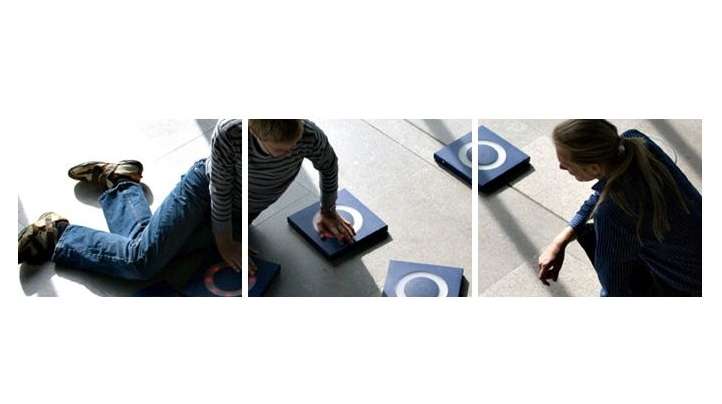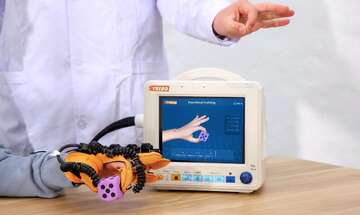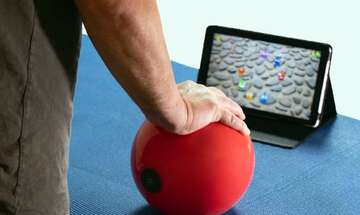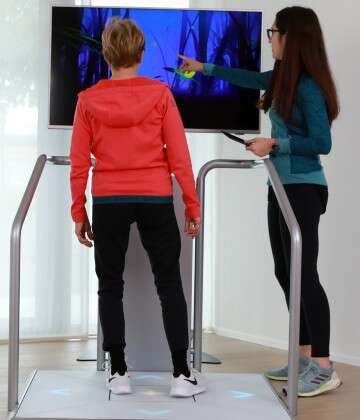Activities for Autistic Children: Modular Interactive Tiles
 images: E-ROBOT.DK
images: E-ROBOT.DK Modular interactive tiles created by Entertainment Robotics provide a useful tool for diagnosing children with autism as well as a variety of fun, entertaining games for kids.
Modular interactive tiles are an excellent tool for interactive play, often used in sensory play and other activities for children with autism. Modular robotic tiles like those made by Entertainment Robotics allow autistic children to practice construction play and have fun with it. At the same time, the way in which the children approach the game and interact with the modular tiles makes it possible for researchers to observe the play and learn something about the children engaged in it from their individual mode of interaction with the tiles. In this way, the modular interactive tiles can serve as a supplementary tool for diagnosis.
Children with autism usually struggle with communication and social and emotional relationships, and they can also suffer from various cognitive problems. Autism can overlap with a number of disorders, including attention deficit hyperactivity disorder (ADHD), and it is often difficult for physicians to come up with an accurate diagnosis. A study conducted at the institution Bihuset in Denmark and published in 2009 revealed that modular robotic playware can indeed be a very useful diagnosis tool, as the intelligent software and hardware can automatically register children's different modes of interacting with the tiles and classify the interaction models by using artificial neural networks. The study investigated instances of correspondence between the children's play modes and their diagnoses. Anecdotal evidence showed that the cases that the artificial neural networks had the most difficulty classifying corresponded with children whose therapists took the longest time with (years) to make an accurate diagnosis.
Entertainment Robotics' interactive tiles are not the first robotic product to be used in an autism study. Various robotic toys and tools had been created over the years to help autistic children learn social skills, imitate gestures, rhythm patterns, positive emotional responses, and turn-taking in social interactions. These tools, however, were mostly created for pretend play, while the modular interactive tiles are used for construction play.

The modular tiles are a product that combines robotic technology and artificial intelligence with children's play culture, and they can be used both for play and for therapy and rehabilitation, learning, sports and health, and art. The tiles are connected wirelessly and can easily be set up either on a wall or on the floor. Each tile has both computation and communication abilities, and can easily detect the states of the neighbouring tiles and change its own state accordingly.
The tiles have a flexible set-up, allowing the user to easily create a number of different games and activities. They provide instant feedback during the play, which stimulates the player's engagement and keeps him or her exploring the possibilities of creative play. The robotic tiles provide inclusive play, allowing children with disabilities to participate in a variety of games. The tiles are attached to each other using magnets, they can be mounted on a magnetic surface, and are easy to set up and disassemble. As the player interacts with the tiles, the tiles communicate with each other wirelessly, making it possible for the player to experience a number of different games.
The tiles always create a unique experience for those who use them. Each modular tile contains eight different lights, and each of them can light up in different colours, making it possible to create a large number of patterns and types of interactive games. Once a modular tile is illuminated, the player will press it or step on it. The game can be played at different levels, either by a single person or by multiple players competing against each other. The tiles are battery powered and can run for as long as 30 hours at a time. It only takes three hours to recharge them.
Modular robotic tiles were originally developed for exercise, as a more compelling and motivational alternative to traditional physical therapy and rehabilitation. They provide a variety of options and can be used for a number of different purposes and games. For instance, if you add music, the tiles can be used for dance games. If you link the tiles wirelessly to a PC, you can monitor and document the players' performance, which is particularly useful for physical therapists and physicians overseeing patients' recovery. Other sensory play and motor activities for kids to enjoy using the tiles include colour race, reaching games, stepper games, and games that develop cognitive skills such as Simon Says and Memory.
Learn more about the modular robotic tiles in the video below.

 SEND INQUIRY
SEND INQUIRY










